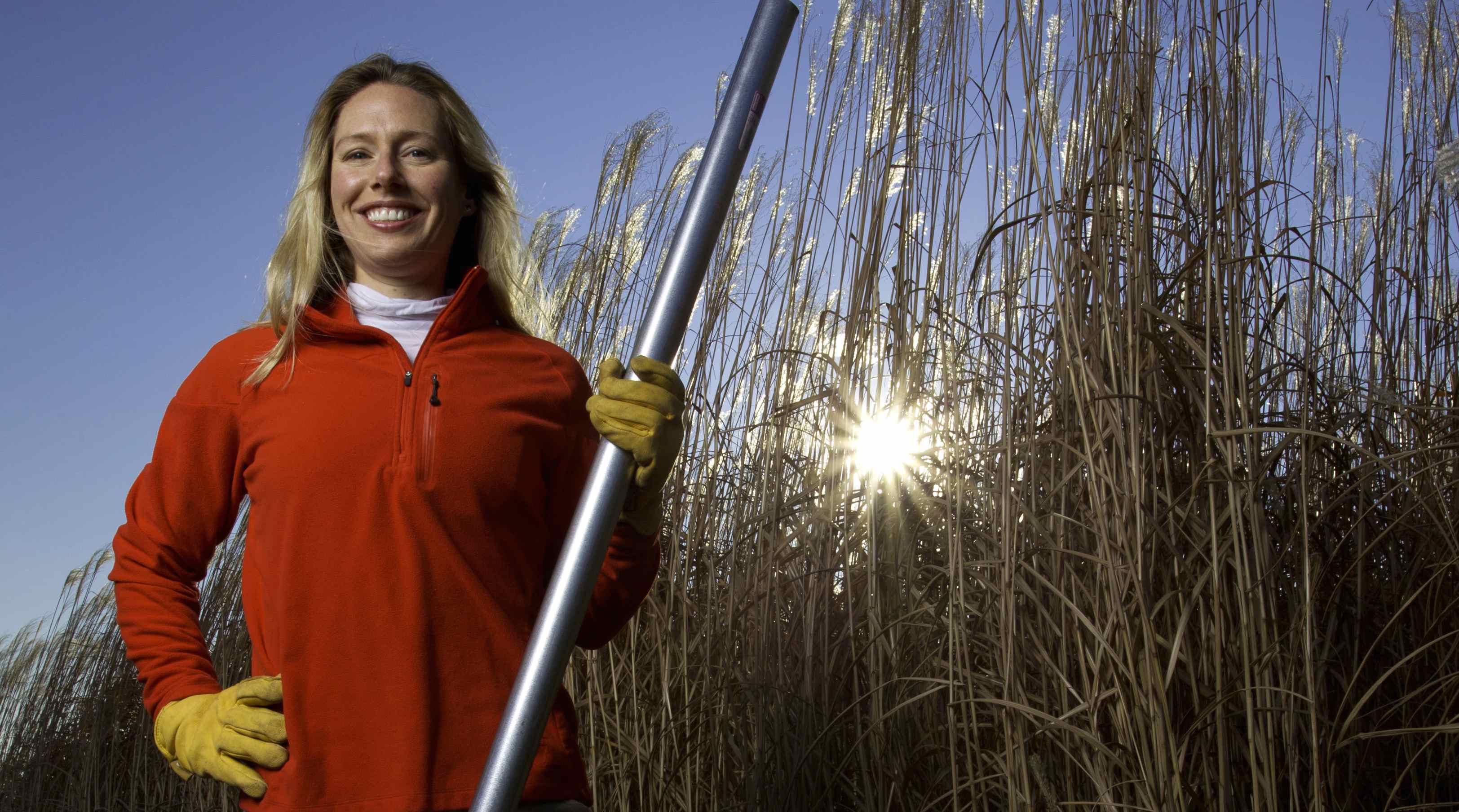
Paving the Way for Perennials
A recently announced goal to reduce U.S. carbon emissions by 30 percent by the year 2030 may help to open new markets for Iowa biomass derived from perennial grasses.
That makes Emily Heaton’s quest to “save the world with giant grasses” all the more timely. Heaton, an associate professor of agronomy, says the Environmental Protection Agency’s “Clean Power Plan” lays the groundwork for a “perennial economy” that could create demand for grasses such as switchgrass and prairie cordgrass.
Miscanthus, a giant grass that originates in Asia and the subject of much of Heaton’s research, may also fit the bill. Heaton studies perennial grasses, or grasses that grow back year after year, to get a better handle on their environmental benefits. She says Iowa stands to gain much by replacing some of the acres currently devoted to corn and soybean with tall grasses. Planting perennial grasses on about 15 percent of the farmland in the state could lead to a 90 percent reduction in sediment losses and a fourfold increase in plant and animal diversity, she says.
“More perennials in Iowa means more roots in the ground, which keeps soil and water and nutrients where they should be,” Heaton says.
While the environmental benefits of perennial grasses are clear, the economic benefits have lagged behind, largely because there’s little demand for the biomass the grasses produce. But the new federal clean energy plan suggests that new sources of biomass may play a key role in meeting the carbon reduction goals.
Heaton says that may create an opportunity for Iowa farmers to plant perennial grasses such as miscanthus on sections of farmland that often don’t turn a profit.
Over a million acres of Iowa cropland lose money every year, usually due to poor soil conditions, she says. It might make more sense to plant prairie grasses there to reduce cost and increase environmental performance. If demand for biomass grows, planting perennial grasses may become a profitable choice for Iowa farmers, Heaton says.
Heaton, who joined the faculty at Iowa State in 2008, played a pivotal role in a collaboration with the University of Iowa to grow biomass for energy production on campus. Heaton helped orchestrate the planting and harvesting of miscanthus on 28 acres in eastern Iowa. The project received the Governor’s Iowa Environmental Excellence Award in a ceremony in early August.
As a doctorate student at the University of Illinois, Heaton worked on the first side-by-side trials of miscanthus and switchgrass in the United States, a project she says fits well with the land-grant mission of schools like Iowa State.
“We had questions we wanted to answer, so we went out and found those answers,” she says. “Then we made that new knowledge available for people to advance even further.”



